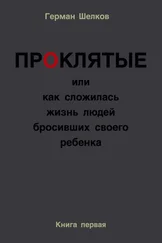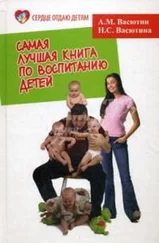Martin S. Banks, Richard N. Aslin, and Robert D. Letson, «Sensitive Period for the Development of Human Binocular Vision,» Science 190, no. 4215 (1975): 675–77.
Yuri Ostrovsky, Aaron Andalman, and Pawan Sinha, «Vision Following Extended Congenital Blindness,» Psychological Science 17, no. 12 (2006): 1009–14.
John T. Bruer, The Myth of the First Three Years: A New Understanding of Early Brain Development and Lifelong Learning (New York: Simon and Schuster, 1999).
Patricia K. Kuhl, «Early Language Acquisition: Cracking the Speech Code,» Nature Reviews Neuroscience 5, no. 11 (2004): 831–43.
Ian J. Deary, Jian Yang, Gail Davies, Sarah E. Harris, Albert Tenesa, David Liewald, Michelle Luciano, et al., «Genetic Contributions to Stability and Change in Intelligence from Childhood to Old Age,» Nature 482 (2012): 212–15, цитата на с. 212.
Alan J. Gow, Wendy Johnson, Alison Pattie, Caroline E. Brett, Beverly Roberts, John M. Starr, and Ian J. Deary, «Stability and Change in Intelligence from Age 11 to Ages 70, 79, and 87: The Lothian Birth Cohorts of 1921 and 1936,» Psychology and Aging 26, no. 1 (2011): 232–40.
Nancy Bayley, «Consistency and Variability in the Growth of Intelligence from Birth to Eighteen Years,» Pedagogical Seminary and Journal of Genetic Psychology 75, no. 2 (1949): 165–96.
Thomas Sowell, The Einstein Syndrome: Bright Children Who Talk Late (New York: Basic Books, 2002).
Donna Beeston, «The Early Years of Albert Einstein: When Viewed through the Lens of Current Theory and Research, Were There Signs of Giftedness?» APEX 15, no. 4 (2009): 56–77. And Albrecht Folsing, Albert Einstein: A Biography (New York: Viking, 1997).
«Celebrating Edward Teller at 90,» Science & Technology Review июль/август (1998): цитата на с. 4.
John Bruer, The Myth of the First Three Years (New York: Free Press, 2002).
«Gifted & Talented,» NYC Department of Education, http://schools.nyc.gov/ChoicesEnrollment/GiftedandTalented/default.htm. Доступно с 10 марта 2014 года.
Alfred Binet and Theodore Simon, The Development of Intelligence in Children: The Binet-Simon Scale, trans. Elizabeth S. Kite (Baltimore, MD: Williams & Wilkins Company, 1916).
Stephen Camarata and Linda Swisher, «A Note on Intelligence Assessment within Studies of Specific Language Impairment,» Journal of Speech, Language, and Hearing Research 33, no. 1 (1990): 205–7.
Marlene Sotelo-Dynega, Samuel O. Ortiz, Dawn P. Flanagan, and William F. Chaplin, «English Language Proficiency and Test Performance: An Evaluation of Bilingual Students with the Woodcock-Johnson III Tests of Cognitive Abilities,» Psychology in the Schools 50, no. 8 (2013): 781–97.
Oliver Sacks, An Anthropologist on Mars: Seven Paradoxical Tales (New York: Knopf, 1995).
David Wechsler, Wechsler Intelligence Scale for Children: Manual (New York: Psychological Corp., 1949).
Russell Graydon Leiter and Stanley David Porteus, The Leiter International Performance Scale (University of Hawaii, 1936).
McCay Vernon and Beth Daigle-King, «Historical Overview of Inpatient Care of Mental Patients Who Are Deaf,» American Annals of the Deaf 144, no. 1 (1999): 51–61.
Kevin S. McGrew, «CHC Theory and the Human Cognitive Abilities Project: Standing on the Shoulders of the Giants of Psychometric Intelligence Research,» Intelligence 37, no. 1 (2009): 1–10.
Randy W. Kamphaus, Martha D. Petoskey, and Anna Walters Morgan, «A History of Intelligence Test Interpretation,» in Contemporary Intellectual Assessment: Theories, Tests, and Issues, eds. Dawn P. Flanagan and Patti L. Harrison (New York: Guilford Publications, 1997): 3–16.
Florence L. Goodenough and Dale B. Harris, «Studies in the Psychology of Children's Drawings: II; 1928–1949,» Psychological Bulletin 47, no. 5 (1950): 369–433.
Dale B. Harris, Children's Drawings as Measures of Intellectual Maturity: A Revision and Extension of the Goodenough Draw-a-Man Test (New York: Harcourt, Brace & World, 1963).
John L. Horn, «Remodeling Old Models of Intelligence,» in Handbook of Intelligence, ed. B. B. Wolman (New York: John Wiley & Sons, 1985), 267–300. John B. Carroll, «Psychometric Tests as Cognitive Tasks: A New 'Structure of Intellect,'» Technical Report no. 4, Educational Testing Service, Princeton, NJ, 1974.
Patricia K., Kuhl, Barbara T. Conboy, Denise Padden, Tobey Nelson, and Jessica Pruitt, «Early Speech Perception and Later Language Development: Implications for the 'Critical Period,'» Language Learning and Development 1, no. 3/4 (2005): 237–64.
Wolfgang Schneider and Michael Pressley, Memory Development between Two and Twenty (Psychology Press, 2013).
Kathy A. Lutz and Richard J. Lutz, «Imagery-Eliciting Strategies: Review and Implications of Research,» Advances in Consumer Research 5, no. 1 (1978): 611–20.
Willem J. M. Levelt, «Models of Word Production,» Trends in Cognitive Sciences 3, no. 6 (1999): 223–32.
Kevin S. McGrew and Jeffrey J. Evans, «Internal and External Factorial Extensions to the Cattell – Horn – Carroll (CHC) Theory of Cognitive Abilities: A Review of Factor Analytic Research since Carroll's Seminal 1993 Treatise,» Carroll Human Cognitive Abilities (HCA) Project Research Report 2 (2004).
Jorg D. Jescheniak and Willem J. M. Levelt, «Word Frequency Effects in Speech Production: Retrieval of Syntactic Information and of Phonological Form,» Journal of Experimental Psychology: Learning, Memory, and Cognition 20, no. 4 (1994): 824–43.
Steven Pinker, «Words and Rules in the Human Brain,» Nature 387 (1997): 547–48.
Richard Murnane, Isabel Sawhill, and Catherine Snow, «Literacy Challenges for the Twenty-First Century: Introducing the Issue,» The Future of Children 22, no. 2 (2012): 3–15.
PISA 2009 Results: What Students Know and Can Do: Student Performance in Reading, Mathematics and Science, Programme for International Student Assessment. OECD, 2011.
Anneli Niikko, «Finnish Daycare: Caring, Education and Instruction,» in Nordic Childhoods and Early Education: Philosophy, Research, Policy and Practice in Denmark, Finland, Iceland, Norway, and Sweden, ed. Judith T. Wagner (Information Age Publishing Inc., 2006).
Wolfgang J. Arnold, «The Spiral Ganglion of the Newborn Baby,» American Journal of Otology 3, no. 3 (1982): 266–69.
Scott Barry Kaufman, Colin G. DeYoung, Jeremy R. Gray, Jamie Brown, and Nicholas Mackintosh, «Associative Learning Predicts Intelligence Above and Beyond Working Memory and Processing Speed,» Intelligence 37, no. 4 (2009): 374–82.
Читать дальше
Конец ознакомительного отрывка
Купить книгу












